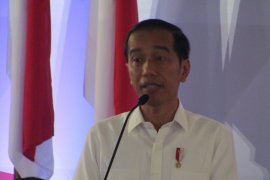According to the Village Law, Village Funds are defined as funds sourced from the state budget that will be transferred through the regional budget to finance the administration of village government, village administration, empowerment in the fields of education and health, community economic empowerment, especially for alleviating poverty, implementing development, and providing financial assistance to institutions in the village, one of which is a village-owned enterprise (BUMDes).
The use of Village Funds must be decided jointly through village development planning forums (musrenbang).
Starting from the 2015-2023 period, as much as Rp537 trillion of Village Funds had been disbursed, with an average of Rp1 billion per village per year.
Until now, the Village Fund has produced various achievements in the form of infrastructure for the welfare of villages.
Based on data from the Villages, Development of Disadvantaged Regions, and Transmigration (PDTT) Ministry, village infrastructure development through Village Funds was able to realize 311,656 kilometers of village roads, 1,602,227 meters of bridges, 12,297 village markets, 42,370 BUMDes activities, 7,420 boat mooring units, 5,413 pond units, 572,812 irrigation units, and 249,415 soil retaining units.
Apart from infrastructure development, the Village Fund is also used to support the quality of life for rural communities, such as building 29,430 sports facilities; 1,502,631 clean water units; 444,465 bathing, washing, and toilet facilities (MCK) units; 14,462 villages' maternity hut (polindes) units; 45,827,627 meters of drainage; 66,727 early childhood education unit (PAUD) activities; and 42,388 integrated health posts (posyandu) units; as well as constructing 76,669 well units.
With all these forms of development, the Village Fund has also contributed to a decrease in the number of very underdeveloped and underdeveloped villages.
Data from 2018 showed 14,047 villages with underdeveloped status, but the number dropped drastically to 4,365 underdeveloped villages in 2022. With an average budget of Rp1 billion per village per year, the Village Fund has had a considerable impact on the progress of villages in Indonesia.
This means the village has the ability to accelerate the progress and welfare of villagers as long as they obtain increased authority and adequate resources, including a larger allocation of village funds.
This achievement also dispelled the concerns of several parties regarding the village's management of the Village Fund.
Increase in Village Funds
As a commitment to participate in developing villages, Deputy Speaker of the House of Representatives (DPR), Muhaimin Iskandar, proposed that the Village Fund be increased to Rp5 billion, from Rp1 billion per village per year.
The increase in Village Funds aimed at realizing an advanced Indonesia since one of the ways to develop the country is through village development.
With the increase in Village Funds, Iskandar hopes that village governments would be more flexible and focused on conducting activities, one of which is for the development of human resources (HR).
However, the village head must have commitment and responsibility in managing the Village Fund. The village head must be more advanced in the management and its on-field implementation.
Village Fund management should be able to meet three criteria: right on target, well-planned and implemented, and free from corruption.
They must also bear in mind that the Village Fund is provided by the government for the benefit of villagers and mandated to village officials as an instrument for villagers’ welfare.
Hence, village financial management must be transparent, accountable, and participatory, as well as be implemented in an orderly and disciplined manner according to applicable regulations.
Human Resource Improvement
PDTT Minister Abdul Halim Iskandar said that one of the directions for using Village Funds in 2023 is to improve the quality of human resources (HR).
One example of an activity that falls under the category of capacity-building activities for village residents is the construction or maintenance of children's education facilities and infrastructure as well as a library for villagers, including the procurement of books and reading materials, learning equipment, and games.
In addition, the use of Village Funds can be useful for incentive assistance for PAUD teachers.
In order to be right on target for human resource development, the use of Village Funds cannot leave anyone behind, including women, persons with disabilities, or other marginalized people.
All village residents must be able to gain benefits from the Village Fund. Hence, Minister Iskandar emphasized the importance of village SDGs-based micro data, or detailed data by name and by address from each village.
Village Sustainable Development Goals (SDGs) are an integrated effort for the economic, social, environmental, legal, and governance development of village communities.
Village SDGs-based data can be used as a basis for determining the direction of village development policies. Apart from that, data based on Village SDGs can also be used as an important instrument in the utilization of Village Funds.
Development based on Village SDGs is considered able to provide a planning direction that is in accordance with village conditions. On the other hand, it can also be used by all relevant stakeholders, from the central to the village level.
With valid, complete, and always updated data, the village government can dive deep into the village’s problems and potential.
In order to accelerate improvement in the quality of human resources, the PDTT Ministry has also played a strategic role by actively promoting trilateral cooperation, namely among universities, ministries, and villages.
Higher education will help the village in producing superior and competitive village cadres, who are able to advance the village and its villagers to face the latest challenges.
University actors should be able to assist the village in improving the quality of village human resources, driving the village economy to grow, and ensuring preservation of the village's local culture.
Lately, villages in Indonesia have occupied a strategic position and have become an important part of development acceleration in Indonesia.
The Village Fund Program has become one of the government's efforts to encourage economic growth of villagers, reduce village unemployment, and increase the education and expectations of villagers.
A well-managed village fund is a way for residents to increase their hopes, which in the end will become an empowered, independent, and prosperous village.
Related news: Govt helps 6,238 villages become independent: ministry
Related news: Road construction using Village Funds boosts people's economy: govt
Related news: Optimize village funds to tackle stunting, extreme poverty: Minister
Translator: Zubi Mahrofi, Resinta S
Editor: Azis Kurmala
Copyright © ANTARA 2023












